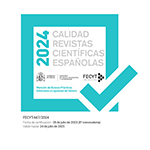The Well-Being Dimensions of Children Living in Buenos Aires
Abstract
This paper presents the concept of Well-being, defined as the cognitive and affective evaluation that a person makes of his/her own life. The interest is centered in understanding what makes them happy and what generates well-being among boys and girls. In order to do so, different areas of children’s lives were accessed, trying to encompass the social, cultural and political dimensions of Well-being. Qualitative method was used, giving the children a protagonist role. Two groups of boys and girls between 8 and 12 years old participated, living in Buenos Aires, Argentina. The group technique was used, we gave voice to the children and focused on the following topics: significant people in their lives – family and peers – and significant places – school and city. The results of the study show that family and peer groups play a central role for these children while the school and the city play an ambivalent part.Downloads
Article download
License
In order to support the global exchange of knowledge, the journal Sociedad e Infancias is allowing unrestricted access to its content as from its publication in this electronic edition, and as such it is an open-access journal. The originals published in this journal are the property of the Complutense University of Madrid and any reproduction thereof in full or in part must cite the source. All content is distributed under a Creative Commons Attribution 4.0 use and distribution licence (CC BY 4.0). This circumstance must be expressly stated in these terms where necessary. You can view the summary and the complete legal text of the licence.










